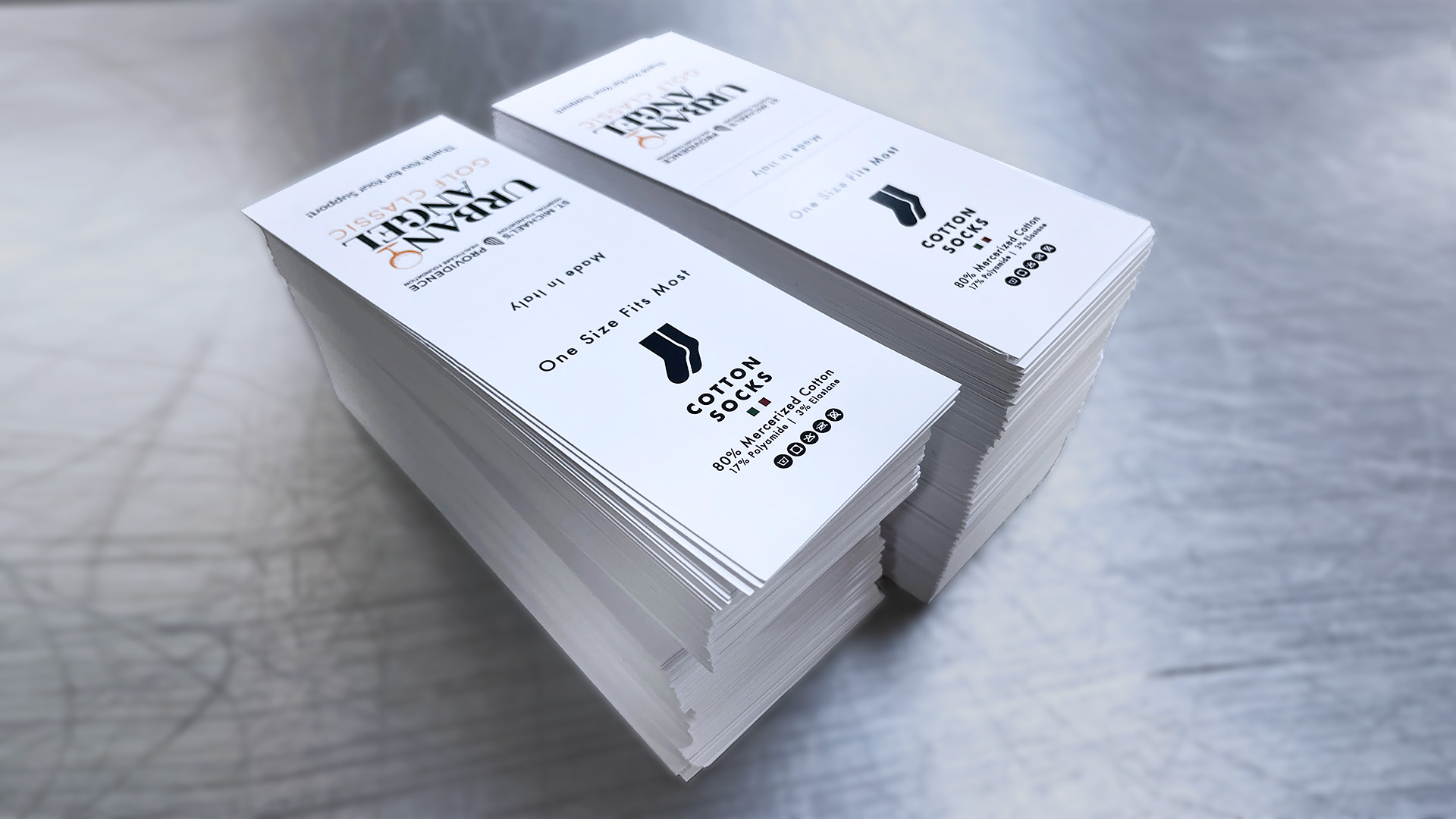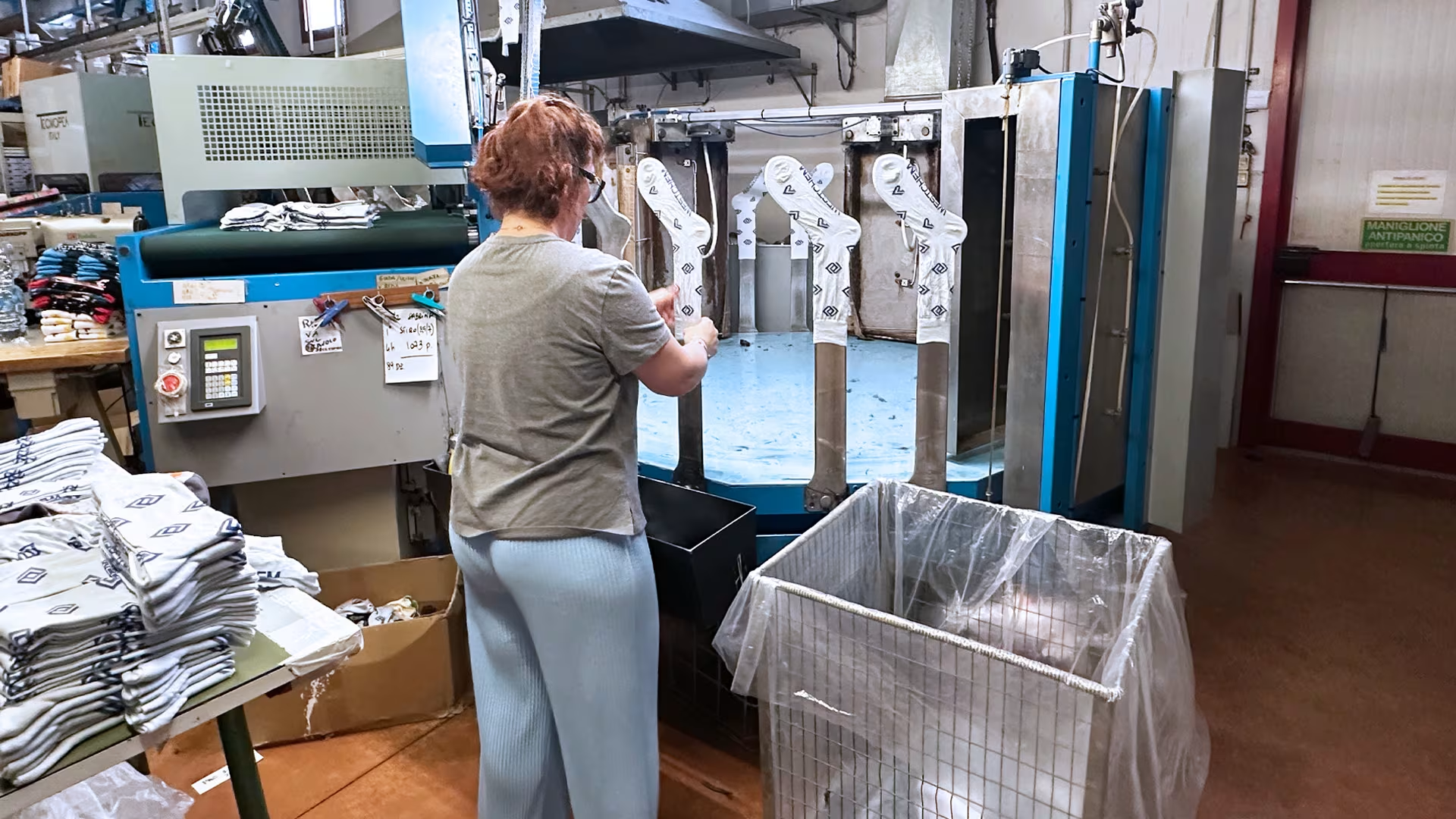What Is Mercerized Cotton Yarn?

The story of mercerized cotton dates back to 1844, when a British chemist named John Mercer carried out a groundbreaking discovery.
He found that treating cotton fibers with sodium hydroxide caused them to swell, resulting in a significant transformation in their properties.
This process, named mercerization in honor of John Mercer, would revolutionize the textile industry and pave the way for a new era of high-quality cotton fabrics.
Mercerization alters cotton fibers by treating them with sodium hydroxide, causing the fibers to swell and rearrange their cellulose structure.
This process enhances the fibers’ tensile resistance, improves their surface properties, and makes them more receptive to dyes, giving them a lustrous appearance.
The process of mercerization, pioneered by John Mercer, has left an enduring imprint on the textile industry and changed how the world views cotton fibre forever.
Mercerized cotton remains a favored choice for a diverse range of applications, and its influence continues to reverberate in the production of premium textiles to this day.
The Mercerization Process: Transforming Cotton Yarns in 3 Steps

Three main steps make up the mercerization process: treating cotton yarn fibres with caustic soda, applying tension, and neutralizing and rinsing the treated yarns.
Each step is vital in the transformation of ordinary cotton yarns into luxurious, high-quality material more commonly known as mercerized cotton.
Let's explore these three steps in more detail.
1. Sodium Hydroxide Treatment
During the first step of the mercerization process, the cotton fabrics are submerged in a sodium hydroxide solution (also known as Caustic soda) causing the cellulose fibers to swell.
This swelling leads to a rearrangement of the cellulose structure within the fibers, resulting in enhanced properties such as increased luster, strength, and dye uptake.
The concentration of sodium hydroxide typically ranges from 20-30%, and maintaining a steady temperature during this treatment is crucial for achieving optimal results.
While caustic soda is the most common chemical treatment used in mercerization, sulfuric acid treatment can also be utilized as an alternative treatment method.
However, sulfuric acid treatment is less common due to its corrosive nature and potential environmental impact.
Regardless of the chemical solution used, the sodium hydroxide treatment step is essential in transforming cotton fibers and enhancing their properties.
2. Tension Application

Applying tension to the surface of the threads during the chemical mercerization process is a critical step in achieving optimal results.
By stretching and maintaining tension on the surface of the threads of each fiber during the caustic soda treatment, the fabrics are prevented from shrinking, and their desired properties, such as extra shine and strong tensile integrity, are preserved.
The increased elasticity brought about by tension application makes mercerized cotton fiber more durable and resistant to wear and tear.
This combination of added strength and durability, combined with a polyester core, makes mercerized cotton fabrics a well favored material of choice for a variety of applications, from clothing to home textiles, fabrics and accessories, where cotton fiber is highly valued.
3. Neutralizing and Rinsing
After the caustic soda treatment and tension application, the mercerized cotton yarn must undergo the following steps for neutralization treatment and rinsing:
- Use an acidic solution, such as acetic acid, to neutralize the alkaline nature of the caustic soda used in the mercerization process.
- Rinse the fabrics thoroughly to remove any residual chemicals.
- Ensure that the fabric is completely free of any remaining alkaline or acidic substances before further processing.
These steps are necessary to remove any potential damage to the fabric and prepare it for the next stages of production.
Following neutralization, the fibre is rinsed with water to remove any leftover chemicals and ensure a clean, high-quality final product.
The neutralizing and rinsing steps not only improve the appearance and properties of the mercerized cotton yarns but also ensure that it is free from any harmful chemicals or agents that may affect its performance or wearability.
4 Benefits of Mercerized Cotton Yarn

At Sockrates, we use mercerized cotton in our custom athletic socks, premium tube socks, custom dress socks and even our premium baby/youth socks.
Mercerized cotton yarn offers a multitude of benefits that set it apart from untreated cotton.
Some of these advantages include:
- Enhanced lustre and vibrancy
- Improved dye uptake
- Increased pull resistance
- Reduced fabric shrinkage
Let’s talk about each of these benefits in more detail to understand their contribution to the superior quality and appeal of mercerized cotton fabrics.
1. Enhanced Luster and Vibrancy

The most striking feature of mercerized cotton is its lustrous silky appearance, which is a result of the rearrangement of fibers during the mercerization process.
This rearrangement not only increases the fibers’ dye uptake and color penetration but also gives the fabric a silky smoothness, similar to silk.
Mercerized cotton’s enhanced luster makes it an attractive choice for a wide variety of applications, from clothing like custom socks to accessories and home textiles.
Its eye-catching appearance, bright, vibrant surface and long-lasting colors ensure that mercerized cotton products always look their best, even after multiple washes.
2. Improved Dye Uptake

One of the key benefits of Sockrates mercerized cotton is its improved dye uptake, which results from the swelling of the fibers during the caustic soda treatment.
This heightened absorbent quality enables mercerized cotton to retain dyes more efficiently than untreated cotton.
The way mercerized cotton absorbs dyes enhances its appearance and contributes to its durability, as the colors remain vibrant and resistant to fading over time.
The enhanced capacity for dyes absorption enables manufacturers like Sockrates to craft stunning custom sock designs featuring vivid, enduring colors.
3. Increased Tensile Strength

The increased tensile strength of mercerized cotton fabrics is another notable benefit of the mercerization process.
As the fibers undergo chemical treatment and tension application, their structure is altered, leading to fabrics with enhanced strength and durability.
This boosted tensile strength makes mercerized, cotton fibres, like in our custom athletic socks, more resistant to wear and tear, ensuring that fabrics and products made from this material can withstand the rigors of daily use and remain in excellent condition for longer periods.
Reduced Fabric Shrinkage

One of the most practical benefits of mercerized cotton fabric is its reduced shrinkage compared to untreated cotton fabric. Thank you John Mercer!
The mercerization process helps to tighten the weave of the threads in the fabric, preventing the fibers and threads from shrinking when washed or exposed to either temperature or moisture.
This reduced shrinkage makes mercerized cotton more dimensionally stable, ensuring that fabrics and products made from this material maintain their shape and fit even after multiple washes.
This is particularly useful for clothing and home textiles, where maintaining the fabric at a consistent size and appearance is essential for both form and function.
Applications of Mercerized Cotton Yarn

Thanks to its numerous benefits, mercerized cotton yarn is commonly used in a wide range of applications.
It's combination of enhanced luster, vibrant colors, increased stretching resilience, and reduced shrinkage make it an attractive choice for manufacturers and consumers alike.
From luxurious bed linens and plush towels to high-quality garments and stylish accessories (like premium custom dress socks), mercerized cotton yarn can be widely found in a variety of products that prioritize comfort, appearance, and durability.
Some examples of products that commonly use mercerized cotton include:
- Bed linens
- Towels
- T-shirts
- Dresses
- Premium Socks
- Tablecloths
- Curtains
- Upholstery fabrics
Its strength and resistance to shrinking and fading also contribute to its popularity in the textile industry, where mercerized cotton fibres are highly valued.
Caring for Mercerized Cotton Products

Proper care is essential for maintaining the quality and longevity of mercerized cotton fabrics you wear.
Following the recommended washing and drying instructions is key to maintaining the optimal wear and condition of your mercerized cotton items.
While specific care instructions may vary depending on the product, mercerized cotton can generally be cared for in the following ways:
- Machine or hand washed, as indicated on the garment or yarn label
- Using cold water and gentle detergents is recommended, as hot water and harsh chemicals can damage the fabric
- After washing, it’s best to lay the item flat or roll it in a towel to remove excess moisture before allowing it to air dry
Adhering to these simple care guidelines will help prolong the beauty, wear and durability of your mercerized cotton products.
If you want a more thorough guide on how to care for mercerized cotton and general cotton fabrics, you can read our blog on how to care for cotton socks.
Environmental Impact of Mercerization

Despite the clear benefits of mercerized cotton yarns, we must also consider the environmental impact of the mercerization process.
The use of chemicals, such as caustic soda, and the consumption of water resources during the process can have negative effects on the environment.
However, sustainable practices can help mitigate the environmental impact of chemical mercerization.
By implementing measures such as reusing mercerization effluent, treating wastewater to remove chemicals, and adopting membrane technology to recover caustic soda, textile mills can reduce the environmental footprint of this process.
With the growing demand for mercerized cotton products, the textile industry must prioritize responsible and sustainable practices to lessen the environmental impact and cost of mercerization.
Summary

Mercerized cotton is a remarkable material that offers numerous benefits and applications, thanks to the innovative process of mercerised cotton, discovered by John Mercer.
By treating cotton fibers with sodium hydroxide, applying tension, and neutralizing and rinsing the yarn, mercerized cotton gains enhanced luster, improved dye uptake, increased tensile strength, and reduced shrinking.
While the environmental impact of the mercerization process is a concern, sustainable practices can help mitigate these effects and pave the way for a more responsible and eco-friendly future in the textile industry.
With its undeniable benefits and versatile applications, mercerized cotton continues to be a popular choice for manufacturers and consumers alike, proving that innovation and quality can go hand in hand.
If you would like to create your very own premium custom socks, made with the finest Italian mercerized cotton fiber, you can start your project with us here!
Frequently Asked Questions
What is the difference between cotton yarn and mercerized cotton yarn?
Mercerized cotton yarn is more lustrous, stronger and takes dyes better than conventional cotton fiber, plus it produces less surface lint and is more resistant to mildew. It also tends to shrink and lose shape less.
What is mercerized cotton fiber?
Mercerized cotton fiber is a type of cotton fiber that has undergone a special treatment process known as mercerization.
This process involves submerging the cotton fibers with a caustic solution, typically sodium hydroxide, which causes the cellulose fibers to swell.
This swelling alters the structure and properties of the fibers, enhancing their luster, increasing their ability to absorb dyes, and improving their strength and resistance to shrinkage.
As a result, mercerized cotton fiber is known for its luxurious sheen, vibrant color, and increased durability, making it a popular choice for a variety of textile applications.
How can you tell if cotton fabric is mercerized?
You can tell if cotton is mercerized by looking for a subtle shine, smooth, deep shade, fewer creases on the fabric after wearing or washing, and easier ironing to remove creases.
Is mercerized cotton safe?
Yes, mercerized cotton is safe. The process of mercerization involves immersing cotton with caustic soda, which is then washed out of the fabric thoroughly.
This means that the final product does not contain any residual chemical agents.
Plus, mercerized cotton is stronger and more durable than regular cotton, making it a safe and long-lasting material for various uses.
To stay updated on all the latest sock styles and to learn more about mercerized cotton, be sure to follow us on LinkedIn.














